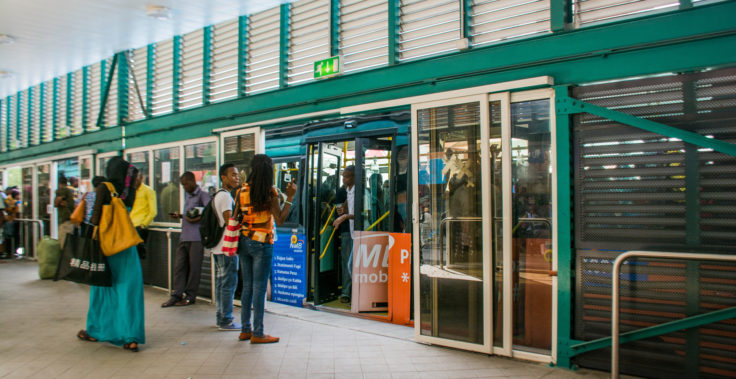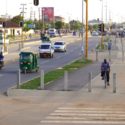August 09, 2016
Dar es Salaam’s BRT Could Transform Urban Life in Tanzania

On May 16, Dar es Salaam launched interim services of the long-awaited Dar es Salaam Rapid Transit (DART) system, the first true BRT in East Africa. DART is more than a public transport system—the corridor designs have also brought many improvements for pedestrians and cyclists. In central Dar es Salaam, the fully dedicated BRT and pedestrian street provides public transport riders with quick access to the city centre while improving the pedestrian environment in the downtown. In addition, the DART project includes high quality cycle tracks, footpaths, and at-grade pedestrian crossings.
Serving the key axis of Morogoro Road, the first phase network spans 21 km. Trunk services ply from Kimara to Kivukoni ferry terminal in the city centre, and also along branches to Morocco junction and the Kariakoo market. The interim system already serves over 160,000 passengers on trunk and feeder buses.
Median-aligned dedicated lanes ensure that DART riders have fast and reliable commutes without interference from private vehicles and minibuses. The DART system has dramatically reduced commute times for Dar es Salaam residents, who previously faced upwards of 4 hours stuck in traffic each day. For passengers taking DART, a trip from Kimara to Kivukoni or Gerezani or Kariokoo now takes only 45 minutes. In addition, most stations have overtaking lanes, allowing a portion of the fleet to provide express services to key destinations.
Service is currently operated by UDA-RT, a consortium of bus operator Shirika La Usafiri Dar Es Salaam (UDA), the Dar es Salaam Commuter Bus Owners Association (DARCOBOA), and the Association of Transporters in Dar es Salaam (UWADAR). For interim services, the system is equipped with 140 buses, including 18 m long articulated buses with a capacity of 155 passengers, and 12 m buses carrying 80 passengers each. Passengers pay fares ranging from TZS 400 to 800 (USD 0.18-0.37). DART is in the process of retaining a second operator to bring the total fleet to just over 300 buses. When fully operational, the system will carry an estimated 400,000 passengers per day.
DART’s second phase, which will involve the laying of BRT infrastructure from Mbagala Rangi Tatu in Temeke Municipality to Kilwa Road in the central business district, is expected to begin soon. Phase 2 will be supported with funding from the African Development Bank. DART also has completed designs for a third phase on Nyerere Road, which will be supported by the World Bank. The project is being implemented in six phases whose completion will see the entire city covered by the BRT service. The project has the potential to be truly transformative, curbing sprawl and improving urban life in Tanzania.


